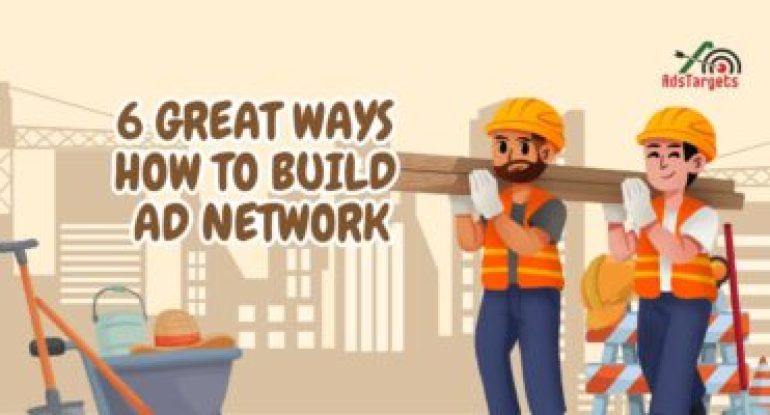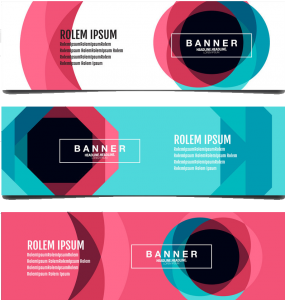Build ad network – that thought has probably crossed the mind of every smart marketer or publisher at least once: “Ad networks make tons of money working with me.” And honestly, it’s not a bad thought. After all, if others are profiting from your traffic or ad space, why not take control and create something of your own? It’s a fair question and a tempting one. After all, if you already understand how advertising works, running your own ad network might sound like the next logical step.
But the truth is figuring out how to build an ad network from scratch isn’t a walk in the park. It’s a process that demands time, capital, and a deep understanding of how the ad tech ecosystem functions. Between managing advertisers, publishers, campaigns, analytics, and payments, there are countless moving parts and each one needs to be executed perfectly.
The good news? It’s absolutely possible and easier than ever — if you start with the right foundation and technology. With the right ad-serving platform, strategy, and structure, you can create an ad network that connects advertisers with quality publishers while generating steady revenue for your business.
In this guide, we’ll walk you through how to build an ad network the smart, sustainable way — from understanding the essential components to setting up your tech stack and scaling your operations. Whether you’re a media entrepreneur, digital marketer, or publisher looking to take control of your monetization, this roadmap will help you turn that thought — “Why don’t I make my own ad network?” — into a real, profitable business.
Table of Contents
ToggleWhat Is an Ad Network? (And Why You Need to Understand It Before You Build One)

Before diving deep into how to build an ad network, let’s pause for a quick reality check. You’d be surprised how many people — even those with years in digital marketing — can’t clearly define where they fit in the advertising ecosystem. Are you a publisher? An advertiser? An agency? Or could you be something bigger — an ad network?
So, let’s break it down simply.
An ad network is a business that connects two worlds: publishers who have ad space (like websites, blogs, or apps) and advertisers who want to promote their products or services. The ad network acts as the middleman — helping advertisers find the best placements while ensuring publishers get paid fairly for their traffic.
Here’s how the other roles differ:
Advertisers are businesses that pay for ad space to reach their target audience.
Publishers own the platforms — websites, apps, or online communities — where those ads appear.
Ad agencies focus mainly on planning, creating, and managing ad campaigns for clients. They handle the creative and strategy side but don’t usually manage ad inventory.
Now, here’s where things get interesting. In today’s digital world, these roles have started to blur. Many large publishers — think major online media outlets — have realized they can do more than just sell ad space. They’ve begun forming alliances with smaller publishers, managing ad placements directly, and effectively transforming into ad networks themselves.
On the flip side, advertisers with deep pockets and strong data systems are doing the same. Giants like Amazon Advertising and Walmart Connect used to simply buy media space. Now, they’ve built their own platforms, controlling both the buying and selling sides of advertising — a true power move that shows the profitability of running an ad network.
So, when you’re thinking about how to build an ad network, you’re really talking about stepping into a dual role — managing both supply (publishers and inventory) and demand (advertisers and campaigns). That’s where the money and the control are.
In short, if you want to take charge of your own advertising ecosystem connecting businesses, managing traffic, and earning from every transaction — then you’re thinking in the right direction. You’re ready to learn how to build an ad network and make it thrive.
How To Create Your Own Ad Network

#STEP 1: DEFINE YOUR BUSINESS -CHOOSING THE RIGHT NICHE FOR YOUR AD NETWORK
Alright, before you get lost in all the technicalities of how to build an ad network, the first thing you need to do is define your business. This step is about figuring out exactly who you are, what your ad network will stand for, and which niche you’ll dominate.
No, this isn’t a philosophical exercise — it’s the foundation of your business model. If you start strong here, everything else (your tech, partners, advertisers, and even revenue) will fall neatly into place.
Let’s break this down.
#1. Choose Your Niche Wisely
Your niche determines the kind of advertisers you’ll attract, the publishers you’ll partner with, and the type of audience you’ll serve. If you already run a successful site with consistent traffic, that’s your starting point. But if you’re just stepping into ad tech or pivoting from another industry, it’s crucial to pick a niche with demand, relevance, and long-term potential.
Here are some of the most profitable and practical niches to consider when learning how to build an ad network in 2025:
Finance & Crypto
To be honest — finance and crypto are still goldmines. With millions of users trading, investing, and obsessing over digital currencies daily, the traffic and advertiser demand are massive.
This space thrives on high CPC (cost-per-click) rates and consistent global interest. As a strategy, blending programmatic DSP demand (automated ad buying) with direct brand partnerships works beautifully here.
If you manage to curate quality traffic and relevant publishers, your Crypto Ad Network could attract top-tier advertisers overnight.
Health & Wellness
Health, fitness, and wellness never go out of style — people always want to look better, feel better, and live longer. However, this niche demands high-quality, credible content because users’ trust is everything.
When learning how to build an ad network in this space, remember that health content falls under the “Your Money or Your Life” category, meaning accuracy and ethics are critical.
Go for hybrid monetization — CPA/CPC for affiliate-style campaigns and CPM for display ads. The reward? A loyal audience, trusted advertisers, and strong, consistent revenue.
Travel & Luxury
Post-pandemic, the travel bug is back — and stronger than ever. Travelers are spending big again, from luxury getaways to local adventures, which makes this a juicy niche for ad networks.
However, the travel industry still loves direct deals — brands prefer to know exactly where their ads are showing. That means relationship-building is key.
If you’re planning a Travel Ad Network, mix direct partnerships with private marketplace (PMP) deals to get the best of both worlds — stable clients and high CPM rates.
Real Estate
Real estate may be complex and competitive, but it’s also timeless. Homes will always sell, agents will always advertise, and developers will always need visibility.
For this niche, focus on CPL (cost per lead) campaigns combined with premium listings. You can also integrate programmatic solutions for broader reach, as real estate advertisers tend to spend heavily for the right leads.
Your Real Estate Ad Network could become the go-to for agencies, brokers, and developers looking for verified traffic and genuine conversions.
Insurance
Sure, it may sound boring — but it’s a goldmine. The insurance sector boasts some of the highest CPCs in digital advertising. Why? Because every click could lead to a high-value customer.
If you’re building a Insurance Ad Network, lean toward native ads that blend seamlessly with trusted content. Combine CPA for direct deals with CPM for programmatic demand. The audience is already looking for reliability — your job is to connect them with it profitably.
Pro Tip:
Start with one niche. Master it. Build authority and relationships. Then, once your ad network stabilizes and revenue becomes predictable, expand into related verticals.
Defining your business and selecting a strong niche isn’t just step one in how to build an ad network it’s the backbone of your entire operation. This decision shapes your audience, determines your monetization model, and sets the tone for the kind of advertisers and publishers you’ll attract.
So take your time, study the market, and choose a niche that not only makes sense financially but also aligns with your long-term vision. Once you’ve nailed that, the rest of your ad network journey becomes a lot smoother — and a lot more profitable.
Choose Your Operational Model
Before diving into building your own ad network with ad-serving platforms, it’s crucial to understand the operational models that define how different networks function. These terms often float around loosely, but getting them right sets you apart from the rookies.
Let’s start with the basics — inventory types:
#1. If your ads target a broad audience and your goal is scale, you’re running a horizontal ad network.
#2. If you focus on a specific niche or industry, you’re a vertical ad network.
#3. If your main focus is premium, high-quality traffic, you’re operating a premium ad network.
#4. And if you cater to a unique audience, offer exclusive inventory, or serve a distinct niche, then you’re a specialized ad network.
Now, here’s where it gets a little more technical — the functional classification:
#1. If you serve as an outsourced ad sales team for high-traffic, well-established websites, you fall under a rep firm.
#2. If your operation revolves around buying and selling ad inventory to make a profit — essentially acting as a media broker — you’re an ad arbitrage network. (That’s where most ad networks fit in, honestly.)
But if your traffic volume is so massive that regular ad networks seem small in comparison, then congratulations — you’re likely an ad aggregator or ad mediator.
At the end of the day, many ad networks don’t fit neatly into any single box — and that’s okay. The key is to understand these distinctions so you don’t sound like an amateur when the conversation gets technical on your next Google Meet call.
# STEP 2: GET THE RIGHT SOFTWARE — THE BACKBONE OF YOUR AD NETWORK
Now that you’ve figured out your niche and business model, it’s time to move to one of the most crucial parts of how to build ad network — getting the right software to power it.
To be honest, no matter how smart your strategy is or how ambitious your vision sounds, without a solid technological foundation, your ad network won’t go very far. The tool that makes everything work behind the scenes is called an ad server, and it’s the beating heart of your operation.
What an Ad Server Actually Does
If you’re serious about learning how to build ad network that functions smoothly and delivers real results, you must understand what an ad server is built for. It’s not just a piece of software — it’s your control room, your analytics center, and your deal manager all rolled into one.
Here’s what it allows you to do:
#1. Serve Ads in Real Time:
Your ad server automatically delivers the right ad to the right user at the right time — across websites, apps, and devices. It handles thousands of requests per second, ensuring your campaigns run efficiently.
#2. Target Smartly and Precisely:
Advanced ad servers let you set granular targeting options like location, device type, demographics, and browsing behavior. The better your targeting, the higher your engagement and click-through rates.
#3. Monitor Performance:
You can track impressions, clicks, conversions, and revenue in real time. This helps you understand what’s working, what’s not, and where to optimize for better results.
#4. Manage Campaigns and Inventory:
From one dashboard, you can handle multiple advertisers and publishers, create campaigns, set pricing models (CPM, CPC, CPA), and allocate inventory based on performance data.
In essence, your ad server is where all the moving parts — demand, supply, targeting, optimization, and reporting — come together in perfect sync.
Why You Can’t Skip This Step
Many beginners try to skip this part when figuring out how to build ad network because they think they can run everything manually. That’s a mistake.
Running an ad network without an ad server is like trying to fly a plane without instruments — you might take off, but you’ll crash before long. The software does the heavy lifting: automating ad delivery, maintaining transparency, and ensuring publishers and advertisers see measurable results.
A good ad server also helps you stay competitive. It gives you access to modern features like:
#1. Programmatic buying and selling for automated transactions.
#2. Real-time bidding (RTB) that lets advertisers bid on impressions instantly.
#3. Fraud detection tools to prevent invalid traffic.
#4. Cross-device reporting to ensure consistent campaign tracking.
These are not optional extras — they are essentials if you want your ad network to perform at a professional level.
#1. Hosted vs. Self-Hosted: Choosing What Works for You
When deciding how to set up your ad server, you have two options:
#2. Hosted (Cloud-Based):
A hosted ad server is managed for you by a third-party provider. It’s easy to set up, requires no maintenance, and offers automatic updates. Ideal for startups or small ad networks that want to focus more on business than technical operations.
#3. Self-Hosted (On-Premise):
A self-hosted ad server gives you full control — you install and manage it on your own servers. This is perfect for large ad networks with strong technical teams, as it offers higher customization and data ownership.
Both have pros and cons. Hosted servers save time, while self-hosted ones offer independence. The choice depends on your scale, technical capacity, and long-term goals.
What to Look for in an Ad Server
When you’re figuring out how to build ad network software that can stand tall, here’s what to prioritize:
#1. Ease of Use: A clean, intuitive dashboard to manage campaigns without friction.
#2. Scalability: The ability to handle growing traffic and demand without crashing.
#3. Detailed Reporting: Real-time insights on clicks, impressions, and ROI.
#4. Integration Capabilities: Seamless connections with DSPs, SSPs, and analytics tools.
#5. Strong Support and Security: You’ll want round-the-clock help and robust data protection.
In short, getting the right ad server isn’t just a step — it’s the step that determines how successful your network becomes. This is where your vision turns into something operational, measurable, and scalable.
If you get this foundation right, everything else — from attracting advertisers to delivering high-performing campaigns — becomes easier, faster, and far more profitable.
# STEP 3: BUILD A STRONG TEAM TO MANAGE YOUR AD NETWORK

Once you’ve got your software and system in place, the next crucial step in how to build ad network successfully is assembling the right team. The truth is, no matter how sophisticated your technology or strategy is, your ad network will only perform as well as the people behind it. You need a mix of creative thinkers, tech experts, and business-minded professionals who understand both the art and science of digital advertising.
Let’s face it — managing an ad network isn’t a one-person job. It’s a full-scale operation that requires continuous optimization, relationship management, campaign monitoring, and innovation. You’ll need a team that can execute, analyze, and adapt quickly in a fast-changing ad tech environment.
Who You Need on Your Team
When exploring how to build ad network, think of your team as the engine that keeps everything running smoothly. Here are the key roles that make the difference between a struggling network and a thriving one:
#1. Media Buyer:
This person handles ad inventory purchases, negotiates pricing, and ensures your ad placements bring in maximum ROI. They are your revenue driver and data interpreter rolled into one.
#2. Copywriter:
A creative mind who crafts persuasive ad copy, landing page text, and communication materials that align with your network’s voice. A good copywriter helps turn impressions into clicks and clicks into conversions.
#3. Creative Designer:
This role is responsible for designing ad creatives, banners, videos, and visuals that capture attention. They make your campaigns stand out in a crowded digital space.
#4. Front-End Developer:
Handles everything users see — from dashboard layouts to interface functionality. A well-designed, fast, and intuitive front end makes your ad network easier to use for both advertisers and publishers.
#5. Programmatic Strategist:
The brain behind automation. They set up programmatic campaigns, manage bidding strategies, and optimize performance through data insights. This role is critical if you want to leverage automation and scalability.
#6. Ad Operations Specialist:
This person ensures campaigns run without glitches. They handle campaign setup, monitor delivery, troubleshoot issues, and make sure everything is compliant and effective.
#7. Backend Specialist:
Works behind the scenes to build and maintain your server infrastructure, APIs, and integrations. They make sure your ad serving system stays fast, secure, and reliable.
#8. Sales Manager:
Your network won’t grow without advertisers and publishers. The sales manager builds relationships, closes deals, and ensures consistent revenue flow.
#9. Data Analyst:
The eyes and ears of your operation. They interpret campaign data, track KPIs, and deliver actionable insights that help you make smarter business decisions.
#10. Legal Advisor:
Advertising is heavily regulated. A lawyer or compliance officer ensures your contracts, data handling, and privacy practices align with industry standards and laws.
Do You Need All of Them?
Not necessarily — it depends on the scale of your vision and your budget. If you’re starting small or still learning how to build ad network from the ground up, you can begin with a lean team or even hire freelancers for specific roles. The key is to prioritize expertise over headcount.
For instance, you can’t skip a media buyer or an ad operations specialist, but you could outsource design and copywriting initially. Likewise, your backend and frontend needs can be handled by one full-stack developer until your network scales up.
How Much Should You Budget for Your Team?
Team cost is one of the biggest investments you’ll make in your ad network journey. Depending on where you hire from, costs can vary widely:
#1. Freelancer or Remote Setup: Around $80,000–$120,000/year
#2. Hybrid or Mid-Level Team: Around $200,000–$300,000/year
#3. Full Professional In-House Team: Around $400,000–$500,000/year
These numbers might look big, but remember — the stronger your team, the faster your ad network grows. A skilled crew not only manages campaigns efficiently but also helps you scale faster, avoid costly mistakes, and attract premium advertisers.
The Bottom Line
Building an ad network is not just about technology — it’s about people. Your team will define your culture, your efficiency, and ultimately, your profitability.
When learning how to build ad network, understand this: software gives you tools, but a great team gives you traction. They help you move from concept to execution, from test campaigns to long-term partnerships, and from startup mode to sustainable growth.
So, invest wisely in people who share your vision and can turn your ad network into a trusted, profitable brand.
# STEP 4: BUILD YOUR OWN NETWORK OF ADVERTISERS AND PUBLISHERS

This is where things get real. Up until now, you’ve been laying the groundwork — choosing your niche, building your tech stack, assembling your team. But now comes the real challenge: bringing people onboard. Learning how to build ad network is one thing; getting advertisers and publishers to trust and partner with you is another. This step defines whether your network thrives or fades out.
The good news? It’s completely doable if you approach it strategically and focus on building relationships grounded in trust, transparency, and performance. Let’s break it down.
#1. Start by Recruiting Publishers
Your first step in how to build ad network is to secure a solid base of publishers — the supply side of your ecosystem. These are website owners, app developers, and content creators who provide the ad space advertisers will use.
If you’re already a publisher yourself, you’ve got a head start. Other publishers are far more likely to trust someone who understands their challenges — fill rates, intrusive ads, delayed payments, and fluctuating CPMs. Use that shared understanding to your advantage.
Here’s what to focus on when recruiting publishers:
#1.Target reputable and niche-relevant sites or apps. These ensure quality impressions and attract premium advertisers.
#2. Offer competitive markups. As a beginner, keep them reasonable — around 10–20%. Lower margins early on help you win trust and scale faster.
#3. Guarantee high fill rates. Aim for 90% or more so publishers know their inventory won’t sit idle.
#4. Provide easy integration. Help them implement ad tags or SDKs quickly. Your tech team will shine here.
#5. Offer flexible and reliable payment terms. Prompt payments build long-term loyalty faster than anything else.
The more seamless you make the onboarding process, the easier it becomes to retain publishers — and word-of-mouth in the publishing community spreads fast.
Attracting and Retaining Advertisers
Now comes the more demanding side — advertisers. They’re cautious, analytical, and results-driven. To bring them on board, you’ll need to prove that your network delivers measurable ROI, not just impressions.
Here’s how to attract advertisers and make them stay:
#1. Highlight the unique benefits of your network. Maybe it’s your niche focus, high-quality traffic, or advanced targeting. Whatever it is, lead with value.
#2. Offer tiered pricing models. Provide flexible options such as CPC, CPM, or CPA to suit different goals and budgets.
#3. Reward loyalty. Add bonuses or extra impressions for long-term partnerships — advertisers love deals that make them feel valued.
#4. Show performance proof. Run A/B tests and share results. Data-driven transparency builds trust faster than sales talk.
#5. Prioritize premium placements. Let advertisers know you can secure high-visibility ad spots with real engagement.
#6. Be open and honest. Advertisers appreciate honesty more than overpromises. If there’s an issue, communicate early and offer solutions.
When advertisers realize that your network isn’t just another platform but a performance partner, they’ll not only stay — they’ll bring others along.
Balancing Both Sides
Think of your ad network as a two-way street. Your success depends on balancing the needs of both publishers and advertisers. Publishers want their inventory filled with relevant, high-paying ads; advertisers want audiences that convert. Your job is to make both sides happy — that’s the essence of how to build ad network effectively.
Here are a few practical tips for achieving that balance:
#1. Match advertisers with publishers carefully. Use data to ensure relevance and avoid ad fatigue.
#2. Set realistic expectations. Don’t oversell; let your results do the talking.
#3. Keep communication open. Regular updates and feedback loops go a long way in retaining partners.
#4. Focus on quality over quantity. A smaller, high-performing network often beats a large, poorly managed one.
The Real Secret to Growth
At the end of the day, your network’s growth won’t just come from clever software or polished presentations — it’ll come from relationships. Every satisfied publisher or advertiser becomes a brand ambassador who recommends you to others.
So, when learning how to build ad network, remember this: performance earns attention, but trust earns longevity. Be transparent, deliver results, and treat every partner like a stakeholder in your success.
If you can do that, your network won’t just attract traffic — it’ll build a thriving digital ecosystem that grows stronger with every campaign.
You’ve built the foundation, brought the right people on board, and secured your first publishers and advertisers. Now it’s time to flip the switch and go live. But here’s the thing — launching your network is not the finish line; it’s where the real work begins.
When learning how to build ad network, one of the most important lessons you’ll discover is this: optimization never ends. It’s a continuous process of testing, tweaking, and fine-tuning both sides — supply and demand — until everything runs smoothly and profitably.
Start Small and Smart
#1. Don’t go all-in from day one. Begin with a few select campaigns to test the waters. This allows you to evaluate performance metrics, understand user behavior, and identify what works best for your unique audience and setup.
#2. Think of this as a pilot phase. You’re not just testing ads — you’re testing your processes, your team’s responsiveness, and your platform’s stability.
#3. Start small. Observe everything. Optimize relentlessly. That’s the golden rule in how to build ad network effectively.
Key Metrics to Watch on the Supply Side
For publishers (the supply side), your focus should be on maximizing monetization and ensuring a smooth user experience. Keep a close eye on:
Fill rates: Measure how much of your inventory is actually being sold and filled with ads. A low fill rate means missed revenue opportunities.
eCPMs (effective cost per thousand impressions): The higher this number, the better your publishers are being paid.
Latency: Ads should load quickly. Delays reduce engagement and harm user experience.
Viewability rates: Make sure ads are seen — not just served. This affects advertiser trust and future spending.
Revenue per publisher: Track how much each publisher earns. It helps identify top performers and those who might need optimization.
Ad quality and relevance: Irrelevant or intrusive ads hurt your brand and your publishers. Maintain quality control.
Monitoring these metrics helps ensure that publishers stay happy and loyal. If they make money, your network makes money — it’s as simple as that.
Key Metrics to Watch on the Demand Side
For advertisers (the demand side), success is all about results — conversions, engagement, and ROI. You’ll want to focus on:
Click-Through Rate (CTR): Indicates how engaging and relevant your ads are to the audience.
Conversion Rate: The percentage of users taking the desired action — signing up, purchasing, downloading, etc.
CPA (Cost per Action): Tracks how much it costs to get one conversion. Lower CPA means better efficiency.
ROAS (Return on Ad Spend): The ultimate measure of profitability. Advertisers need to see clear returns to stay.
Engagement time (for video ads): Shows whether viewers are truly paying attention or skipping your content.
Placement performance: Evaluate which sites, devices, or ad formats are driving the best results and adjust accordingly.
When both sides — publishers and advertisers — are satisfied with their returns, your network begins to thrive organically.
Balancing Supply and Demand
The hardest part of how to build ad network isn’t setting it up — it’s keeping the balance. When publishers are happy but advertisers aren’t, your demand drops. When advertisers are thrilled but publishers earn less, your inventory dries up.
Finding that equilibrium is an ongoing process of communication, testing, and adaptation. Here’s how to maintain it:
Regularly review performance metrics for both sides.
Keep feedback channels open — publishers and advertisers will often tell you what’s working and what’s not.
Don’t hesitate to tweak campaign settings, targeting, or pricing models to maintain balance.
Use automation tools and analytics dashboards to detect inefficiencies early.
A well-balanced network is like a healthy ecosystem — every part sustains the other.
Continuous Optimization Is the Secret Weapon
Launching your network is just the beginning. The real mastery lies in optimizing continuously. Even small tweaks — a new ad placement, refined targeting, faster loading speed — can dramatically improve results.
Review performance data daily, run A/B tests, experiment with different pricing models, and listen to your partners. Over time, you’ll develop a rhythm that keeps your network competitive and profitable.
That’s the essence of how to build ad network successfully — not just building it, but evolving it. Stay flexible, stay curious, and let the numbers guide your next move.
In short: test small, learn fast, scale smart — and never stop optimizing.
# STEP 6: GROW AND ADVERTISE YOUR AD NETWORK

So, you’ve done the hard part — you’ve figured out how to build ad network from the ground up, onboarded publishers, attracted advertisers, and maybe even started seeing profits roll in. But now comes the real challenge: growth.
Building an ad network is only half the story; scaling it into a recognized, trusted, and profitable brand is where the real success lies. This is where strategy, visibility, and innovation kick in.
From Start-Up to Stand-Out: Building Momentum
At this point, your focus should shift from just running campaigns to expanding your footprint. Think about your ad network as a growing ecosystem — the more diverse and dynamic it becomes, the stronger it gets.
Start by onboarding more publishers to expand your ad inventory. The wider your inventory, the more attractive your platform becomes to advertisers. Target both small niche publishers and established websites — a healthy mix ensures diversity and balance in your supply chain.
Next, diversify your ad formats. Don’t limit yourself to just banners or videos. Experiment with native ads, interstitials, rich media, and in-app placements. The more flexible your offering, the broader your reach — and that’s exactly what helps your ad network grow.
If you’re serious about mastering how to build ad network that scales fast, you’ll need to evolve continuously. Every week, assess what’s working, what’s not, and where you can expand. Growth isn’t about guessing; it’s about testing and adapting.
Create a Brand That People Remember
The digital advertising world is crowded, so standing out requires more than good tech — you need a recognizable brand.
Here’s how to get noticed:
Develop a strong brand identity: Choose a name, logo, and tone that reflects trust, innovation, and performance.
Build an engaging website: Your site should clearly explain who you are, what you offer, and why publishers or advertisers should join you.
Show social proof: Share testimonials, client stories, and performance stats. People trust results.
Publish valuable content: Blogs, newsletters, and social media updates are not just for SEO — they build authority and keep your audience engaged.
Be active in communities: Join ad tech forums, webinars, and local digital marketing events to build relationships and stay visible.
Your brand is your credibility. The stronger and more consistent it is, the faster your network will grow.
Leverage Marketing to Accelerate Growth
Even if you know how to build ad network, it won’t matter much if nobody knows it exists. Marketing isn’t optional — it’s essential.
Start by defining your audience. Are you targeting advertisers, publishers, agencies, or all three? Tailor your message to each group’s needs. Advertisers want reach and performance; publishers want reliability and higher eCPMs.
Then, focus on these growth strategies:
Run awareness campaigns: Promote your ad network across digital channels — LinkedIn, Twitter, programmatic platforms, and niche marketing blogs.
Offer sign-up bonuses: Give early partners incentives, like reduced markups or referral bonuses.
Create educational content: Webinars, eBooks, and case studies help position your brand as a thought leader.
Invest in partnerships: Collaborate with analytics platforms, data providers, and ad tech tools to enhance your service offerings.
Track results and adapt: Use analytics to measure what’s bringing in leads, then double down on what works.
Every marketing move should aim to grow your credibility and attract long-term partners.
Keep Improving, Keep Expanding
Remember, growth is not a one-time milestone — it’s an ongoing process. As your ad network matures, continue optimizing your platform, improving user experience, and exploring emerging technologies like AI-driven targeting or contextual advertising.
Also, consider expanding beyond your initial niche. Once your operations are stable, test other industries or regions. Going global is a natural next step once your local base is strong.
In learning how to build ad network that lasts, the most important skill you can master is adaptability. The ad tech landscape shifts constantly, and only those who evolve with it stay relevant.
Building an ad network is a major accomplishment — but scaling it into a thriving, profitable brand takes vision, persistence, and smart marketing. Grow steadily, communicate transparently, and always focus on delivering value to both advertisers and publishers.
If you stay consistent and data-driven, your ad network won’t just compete — it’ll lead. Keep learning, keep testing, and keep growing. That’s how you turn an ad network into an empire.
Conclusion
Learning how to build ad network isn’t just about creating a digital platform — it’s about building an ecosystem that connects advertisers and publishers in a way that delivers consistent value to both sides. It’s a journey that demands strategy, patience, and adaptability.
From defining your niche and choosing the right technology, to assembling a capable team and cultivating strong business relationships, every step plays a vital role in shaping your success. The process may seem complex at first, but once you understand how the moving parts fit together, it becomes an exciting and rewarding venture.
The key is to start small, learn fast, and scale smart. Focus on performance, transparency, and innovation — those three principles will keep your ad network relevant and competitive in a fast-changing digital landscape.
In mastering how to build ad network that thrives, remember: growth doesn’t happen overnight. It’s the result of consistent effort, strong partnerships, and the willingness to evolve. Whether you’re aiming to dominate a niche or compete globally, stay driven, stay innovative, and never stop optimizing — your network’s success depends on it.








